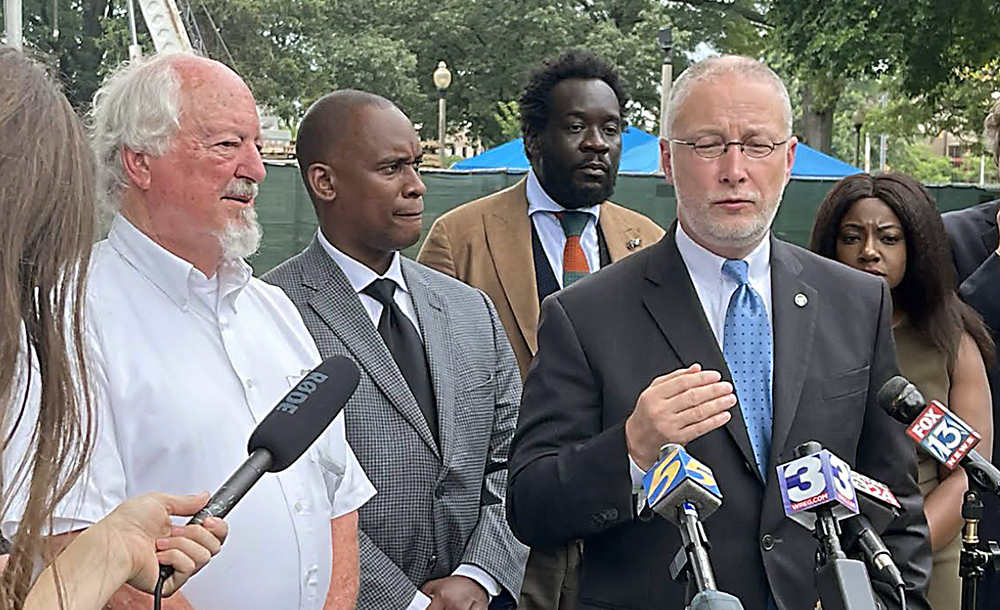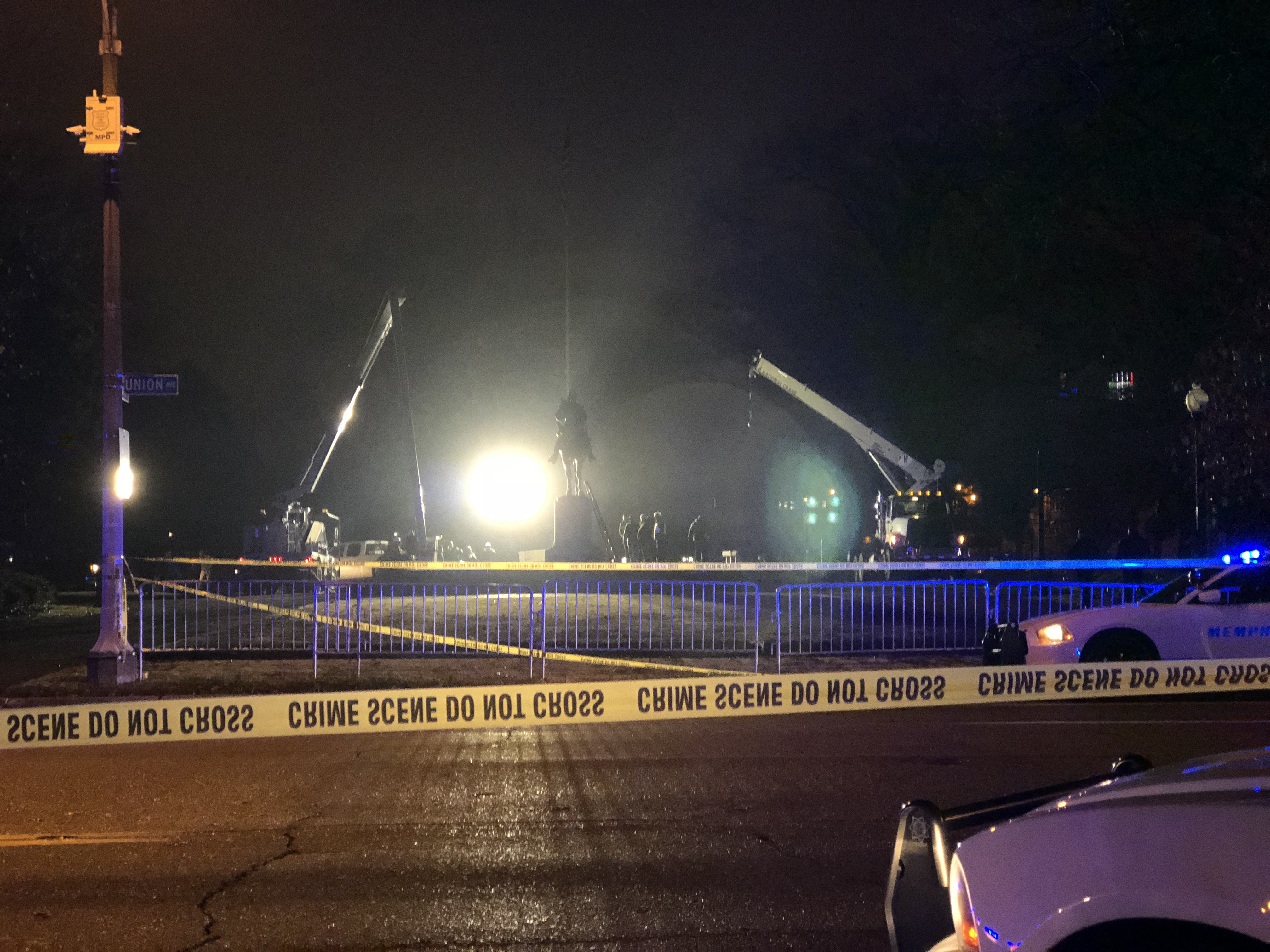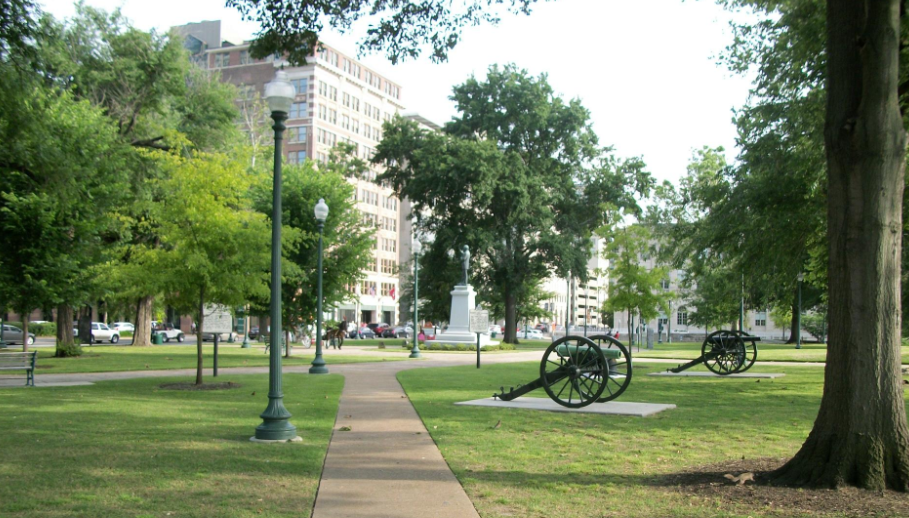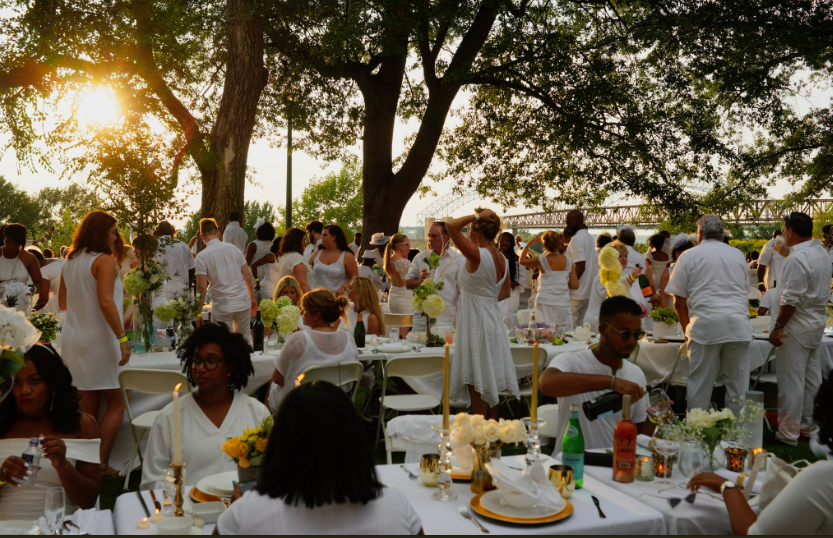In the wake of a previous circumstance of tenseness and hostility at Health Sciences Park involving the disinterment of Nathan Bedford Forrest and his wife Mary Ann Montgomery Forrest, a press conference at the park on Friday, June 11th, was at least partly designed to clear the air, and to a large extent it may have.
The three principal speakers at last Friday’s press conference were County Commissioner and NAACP leader Van Turner of Greenspace, the nonprofit which now controls the large tract formerly known as Forrest Park; Lee Millar, president of the Memphis branch of the Sons of Confederate Veterans; and Brent Taylor, a longtime public official and the local funeral director who satisfied the state requirement for a technical advisor regarding the disinterment of the Forrests, destined now for a new gravesite at a Middle Tennessee site honoring Confederate history.
As Turner expressed it, “Hopefully, all sides were satisfied” — meaning the Black Memphians for whom the removal of the graves and monument meant a “full circle” expungement of former injustice and disregard as well as those whites who equated Confederate General Forrest with glory and their heritage. “I think the Forrest family wanted their ancestor to lie in peace, and there was never going to be any peace here,” Turner said.
Millar attested to the friendly cooperation and a general meeting-of-the-minds between himself and Turner, and Taylor, who saw himself as situated “in the middle” between communities, agreed that “all sides are happy with where we are. Both communities believe that we did this right.”
Asked what the future disposition of the park might be, Turner said he’d received “many recommendations,” but “Right now, we just want this to be a park, not to have any more symbolism here for a little while. We’d like people to just enjoy the park”
• Ellen Hobbs Lyle, the Nashville chancellor who ruled in favor of expanding mail-in voting last year at the height of the pandemic and subsequently incurred the wrath of the state Republican establishment, said last week that she wouldn’t seek another eight-year term in 2022. The suit that she ruled on was pressed by the ACLU and by a group of Memphis petitioners, and Lyle’s ruling was stoutly resisted by the state’s election authorities, who managed to get its scope reduced somewhat in an appeal to the Tennessee Supreme Court. Subsequently, measures to punish Lyle were pushed by GOP legislators in the general assembly but were rejected.
• Governor Bill Lee announced last week that his administration would go ahead with a 37-mile wastewater pipeline connecting the still dormant Haywood County industrial megasite to the Mississippi River. Construction of the $52 million project could begin in the first quarter of 2022.



 Downtown Memphis Commission
Downtown Memphis Commission